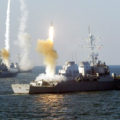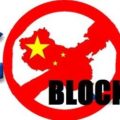The threat from China’s dramatic increase in military power and escalating aggressiveness has produced extraordinary concern among Pacific nations. Beijing has shown no signs of relenting, even in the face of a ruling by international authorities such as the World Court in the Hague which condemned China’s invasion and annexation of the Philippine Exclusive Economic Zone.

In 2018, Japan and Australia moved closer to cooperation in defense matters. The Philippines began to turn back from its flirtation with a humiliating rapprochement with Beijing and started to resume its formally close relations with Washington.
On June First, the U.S. Defense Department reported that “The defense ministers of Australia, Japan and the United States affirm their countries’ alignment in strategic interests and universal principles, including a commitment to democracy, human rights, free trade, and the rules-based international order. Together, the three countries recognize the importance of enhancing engagement with our Indo-Pacific partners, in order to foster regional prosperity, resilience and transparency in a time of geostrategic change.”
Pentagon sources state that they are seeking to strengthen trilateral cooperation in the areas of maritime security, humanitarian assistance and disaster relief, peacekeeping, counter-terrorism, amphibious activities, and non-conventional domains like space, cyberspace and the electromagnetic spectrum.
They seek to do so by increasing what they term “close collaboration,” with regional partners, which the nations involved hope will “identify and coordinate opportunities to build partner capacity through regular information sharing, complementary programs and cooperative activities.”
Other stated goals include: “Increase the complexity and sophistication of trilateral exercises to enhance interoperability, build common understanding, and better enable our defence forces to work together to contribute to peace and security in the Indo-Pacific region. Promote transparency, regional cooperation and the rule of law through port visits and other defense-related activities that demonstrate every nation’s right to freedom of navigation and overflight, in accordance with international law. Improve common understanding and shared regional situational awareness through enhanced trilateral information sharing.”
While both nations had separate defense-related ties to the United States, arranging a tripartite agreement is a significant move.
Asia Nikkei noted in October that “Tokyo has moved to strengthen its relationship with Canberra as part of [Prime Minister Shinzo] Abe’s Free and Open Indo-Pacific Strategy to cooperate with the U.S., Australia, India and other countries in the region under common values like the rule of law.”
“China is challenging America’s position” in the Indo-Pacific, Australia’s government said in a foreign policy white paper last November that pointed out the relative decline of Washington’s presence in the region and Beijing’s rise. Australia is alarmed by China’s expansion of its influence through infrastructure development support among the Pacific Islands, a region in Canberra’s backyard.
A key future step will be bringing in India, with its significant defense and nuclear capabilities, into the growing anti-China alliance.

The U.S., too, has moved towards closer relations with India. Earlier this month, the U.S. State Department emphasized that “India plays a vital role in the U.S. vision for a free and open Indo-Pacific…In 2016, the United States designated India as a Major Defense Partner.”
Washington’s eventual goal should be the establishment of a NATO-type alliance in the region. The Atlantic alliance successfully kept the Soviet Union at bay, even during the period when Moscow had a massive conventional force in Europe and held half the continent in captivity. An equal effort in the Pacific will be more difficult, however. Unlike many of the NATO countries, there is not a shared history of alliance between key Indo-Pacific nations, and, indeed, World War II brought the U.S., India, Australia and the Philippines into direct conflict with Tokyo, which behaved then much as China does now. While bringing Taiwan into such as alliance would almost certainly enrage Beijing, it will be well worth doing given the pro-democracy unrising taking in place in Hong Kong.

















Follow Us